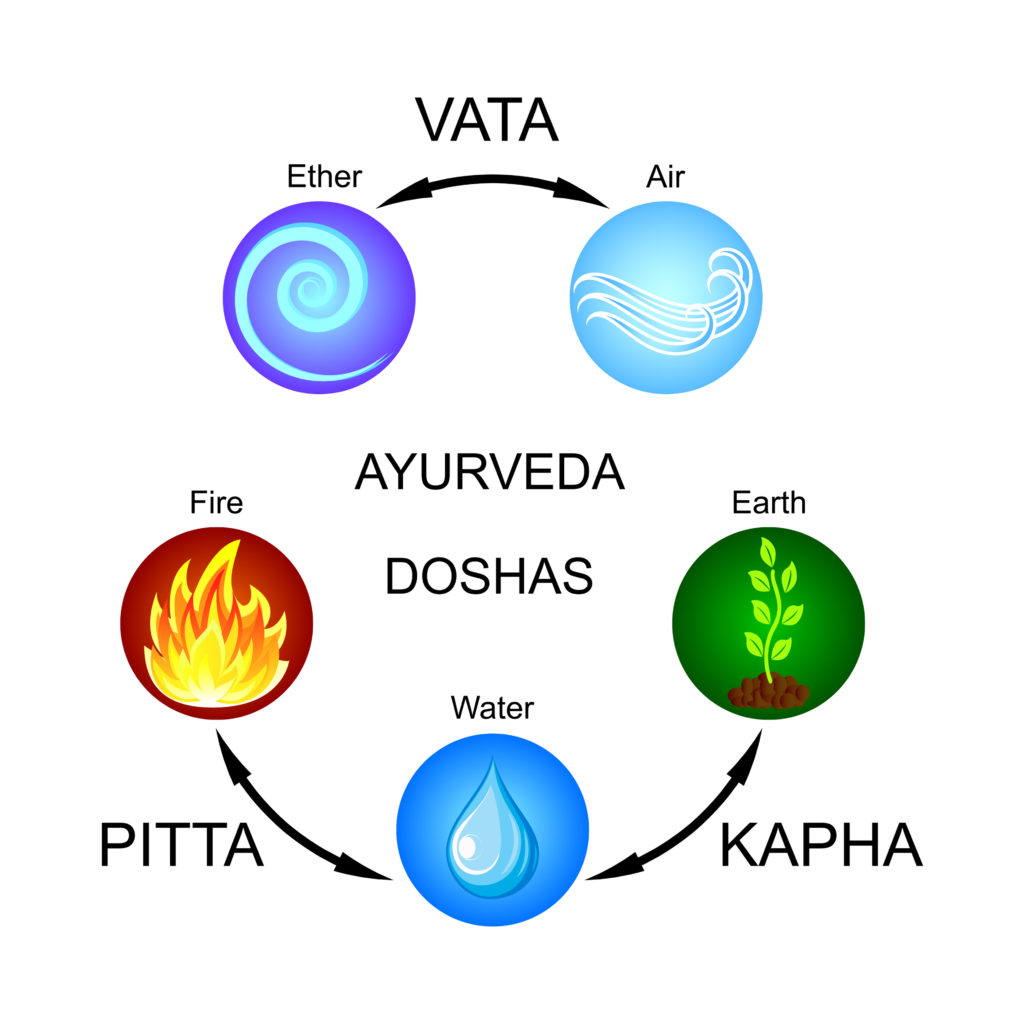Yoga and Ayurveda are India’s greatest gifts to the world. Most of our blogs highlight various aspects of Yoga and its utility in improving your life. Today let us learn about Yoga’s connection with Ayurveda.
Ayurveda is an ancient medical science that originated in India around 2 B.C. Charaka and Sushruta were two Indian doctors who lived when Ayurveda was still a developing science. They documented their medical knowledge to gift the world the most significant literature on ancient Indian medicine, viz., the Charaka Samhita and Sushruta Samhita. Many other Ayurvedic scholars worked hard to spread awareness of Ayurveda. Today, several people worldwide prefer Ayurveda to other forms of treatment for their health issues.

Yoga And Ayurveda: An Entwined Journey
Like Ayurveda, Yoga is also India’s great offering to the world. By standard definition, Yoga combines physical exercises, meditation, and breathing techniques that improve your health. However, Yoga is also a way towards a healthier and better lifestyle. Yoga makes you look at life and your health as a beautiful and holistic offering to humankind.
Ayurveda and Yoga define human health as an equal blend of three aspects: mind, spirit, and body. Therefore, several Yogic principles align with those of Ayurveda and vice versa. The best way to excel at Yoga is to follow its regulations and rules correctly. Yogic literature often references Ayurveda to explain the importance of asanas, meditation techniques, and breathing exercises.

Let us familiarize ourselves with some essential Ayurvedic principles and learn how they will aid our Yoga journey.
Yoga And The Tridoshas
Ayurvedic literature mentions the Tridoshas viz., Vata, Pitta, and Kapha. The Tridoshas are fundamental energies existing within every human being. Ayurveda believes every person is unique and has a different balance of the Tridoshas. When the Tridoshas live harmoniously, people experience good health and balanced well-being. However, when the effect of one dosha exceeds the other, it could result in poor health.
Ayurvedic literature also specifies the disorders most commonly associated with the predominance of each Tridoshas.
Ayurvedic science believes that the five elements of nature govern every cell of the human body. These five elements are earth, fire, wind, water, and space, and they influence the Tridoshas.

Let us get to know the elements of nature and the health disorders associated with the Tridoshas.
- Vata: Vata dosha is a combination of air and space and possesses the traits of these two elements. Predominant Vata dosha can take a toll on the nervous system and cause sleep troubles. Anxiety, bone disorders, and skin conditions are often a result of an imbalance in Vata dosha.
- Pitta: Pitta dosha is closely related to the fire and water elements, with fire being the dominating element. Pitta dosha increases the tendency to develop jealousy, anger, and other negative emotions. Skin disorders, fevers, and blood disorders are commonly associated with Pitta dosha.
- Kapha: Water and earth are the governing elements of Kapha dosha. People with prominent Kapha dosha are likely to expect the effects of poor circulation, slow digestion, and overall physical and mental lethargy.
Ayurvedic science correctly identifies the presence of the doshas, which makes us aware of our constitution. It is possible to balance the ill effects of the doshas with regular practice of Yoga. You may practice specific Yoga asanas to restore the perfect harmony of the Tridoshas and retain good health. Meditation and Pranayama techniques also modify the doshas’ effects on your health.
Ideal Diet Habits
Modifying patients’ diet to suit their constitution and health needs is integral to Ayurvedic treatment. It is common to hear about people having food allergies or developing digestive or other symptoms due to the ingestion of particular food. You are often left wondering why a specific food affects only one person and not the other. Ayurveda answers this question for its patrons. Every person has a different constitution and may be sensitive to the effects of external influences that may not affect others.
Ayurveda classifies dietary traits into three distinct categories: Tamasik, Rajasik, and Satvik. Each of these traits is known as Ahaar (food). Of the three, Satvik Ahaar is the most suitable for maintaining good physical, spiritual, and mental health. (READ our blog on healthy eating habits to know more about the three types of Ahaar)

Yogic principles also discuss the importance of a healthy diet to maintain ideal well-being. Exercise helps your body and mind if your food intake is geared toward maintaining nutritional balance. Yoga does not discriminate based on dietary habits or food preferences. However, Yoga principles advise people to curb their intake of alcohol, tobacco, other stimulants, red meat, and oily or spicy food. Yoga is a technique that relaxes your body while helping you to develop a robust physique and sound mind. Eating foods that act as unnecessary stimulants may not benefit you on your journey as a Yoga student.
Yoga has a much-needed detoxifying effect on your health that could be curbed due to unhealthy eating habits. Ayurveda and Yoga stress the importance of consuming fruits, vegetables, and food that is easily digestible and high in nutrition. Following a healthy diet helps maintain a healthy weight range and keeps lifestyle disorders like hypertension and diabetes mellitus at bay.
Two Healing Systems
Ayurveda is a mainstream branch of medical treatment and is scientifically proven effective. It is one of the most ancient branches of medicine, with ample literature on treating almost all physiological disorders. Ayurveda offers medical and surgical solutions to diseases of the mind and body.
Yoga is a holistic technique for improving your overall health and well-being. While Yoga helps to curb many physical and mental health disorders, it cannot replace any medical or surgical treatment.

Ayurveda and Yoga are two parallel healing systems closely related and interdependent. The ayurvedic treatment utilizes herbs, drugs, and surgical methods to heal physical and mental disorders. Yoga is not a medical science and does not employ herbal medicines, drugs, or surgical procedures for curbing health disorders. It focuses primarily on spiritual healing and upliftment. Yoga and Ayurveda complement one another in several ways owing to their diversified focus.
Ayurvedic treatment may be supplemented with Yoga techniques like asanas, meditation, Mudras, and Pranayama to enhance its effect. Ayurveda is the science of a healthy life, and Yoga is the technique to continue living a healthy life. Both are excellent ways to nurture your physical, mental, and spiritual health and lead a happy and fruitful life.







